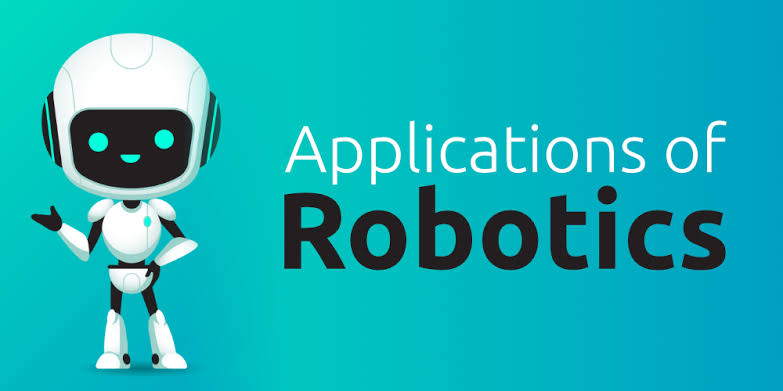The integration of AI into robotics has moved far beyond academic research. It now defines how industries evolve, how services are delivered, and how humans interact with intelligent machines. The top applications in 2025 are focused not just on automation, but on intelligence, adaptability, and collaboration.
Artificial intelligence has become the engine driving the next generation of robotics. From autonomous machines navigating busy warehouses to humanoid robots assisting in hospitals, the fusion of AI with robotics is revolutionizing nearly every industry. In 2025, AI-driven robotics is no longer experimental; it’s operational, scalable, and expanding fast.
This list highlights the top ten AI applications in robotics that are shaping the future of automation, mobility, and intelligent interaction. These technologies stand out for their innovation, real-world impact, and ability to adapt to ever-changing environments.
10. Computer vision for object detection and manipulation
Computer vision is one of the foundational AI applications in robotics. It enables machines to "see," interpret, and interact with their surroundings through visual data. In robotics, this translates to the ability to detect, recognize, and manipulate objects with precision.
From robotic arms sorting items on assembly lines to drones inspecting infrastructure, computer vision is critical for object localization, defect detection, and quality control. With advancements in deep learning and high-resolution sensors, today's vision systems can now handle varied lighting, shapes, and textures in dynamic environments.
9. Reinforcement learning for adaptive control
Reinforcement learning allows robots to learn through trial and error, adjusting actions based on feedback from their environment. It mimics how humans and animals learn complex behaviors by maximizing rewards.
In 2025, reinforcement learning is being used in robots for real-time decision-making, particularly in unfamiliar or rapidly changing settings. Applications range from quadruped robots navigating rough terrains to industrial manipulators optimizing their grip strategies for new objects without prior programming.
8. Natural language processing for human-robot interaction
As robots become more integrated into workplaces and homes, effective communication becomes essential. Natural language processing (NLP) allows robots to understand and respond to spoken or written commands in human language.
NLP-enabled robots are now deployed in customer service, healthcare, education, and hospitality. They can answer questions, follow complex instructions, and even engage in conversation. With improvements in multilingual processing and context-awareness, robots are becoming more fluent communicators and collaborators.
7. AI-powered path planning and obstacle avoidance
Path planning is the process of finding the optimal route from point A to B while avoiding obstacles. AI algorithms now allow robots to dynamically adjust their paths in real time based on sensor input and environmental changes.
This is particularly useful in autonomous mobile robots (AMRs) used in warehouses, hospitals, and airports. In 2025, AI path planning integrates with SLAM (Simultaneous Localization and Mapping) and computer vision, allowing robots to make smarter navigation decisions even in crowded or unfamiliar spaces.
6. Predictive maintenance and diagnostics
One of the most practical AI applications in robotics is predictive maintenance. By analyzing data from robot sensors and historical patterns, AI systems can predict failures before they happen and recommend proactive servicing.
This reduces downtime and extends the life of robotic systems, which is critical in manufacturing, logistics, and aerospace industries. AI can also identify subtle patterns that human technicians might miss, enabling smarter and more cost-effective maintenance cycles.
5. Swarm intelligence for multi-robot coordination
Inspired by nature, swarm intelligence uses AI to enable large groups of robots to work together without centralized control. Each unit follows simple rules, but collectively, they achieve complex tasks like exploration, mapping, or synchronized movement.
In agriculture, autonomous tractors and drones are coordinating planting and harvesting. In emergency response, swarms of aerial robots survey disaster zones. As computing becomes more distributed and AI algorithms more efficient, swarm robotics is proving to be a game-changer in scalability and redundancy.
4. Generative AI for robotic design and simulation
Generative AI has made it easier to design and simulate robotic systems before they’re built. Engineers now use AI to generate optimized robot configurations, simulate mechanical behavior, and evaluate performance under virtual conditions.
This has led to faster prototyping and more efficient designs for everything from robotic exoskeletons to autonomous underwater vehicles. Generative models also assist in motion planning and gesture synthesis, which are essential in humanoid and assistive robots.
3. Emotion and facial recognition for social robotics
Social robots designed for education, caregiving, or customer service now use AI to recognize human emotions through facial expressions, tone of voice, and body language. This helps robots adapt their behavior to better support human users.
In 2025, applications include elderly care robots that detect signs of distress, classroom robots that adjust based on student engagement, and retail assistants that tailor interactions based on customer moods. Emotional AI is becoming a key enabler of empathy in human-robot relationships.
2. Autonomous decision-making in dynamic environments
Autonomy is at the heart of intelligent robotics. AI-powered decision-making allows robots to operate independently, make context-aware choices, and achieve goals with minimal human input. These decisions may involve route adjustments, task prioritization, or emergency responses.
This capability is vital for robots deployed in uncertain environments such as search-and-rescue missions, outer space exploration, or defense. With the integration of neural networks, edge computing, and real-time data streams, robots today are achieving levels of independence once thought impossible.
1. AI-enabled robotic process automation (RPA) in physical workflows
Topping the list is the fusion of AI with robotic process automation—not just for digital workflows, but also for physical tasks. AI-driven RPA is now extending beyond traditional screen-based automation to power robots that perform repetitive, manual labor.
From packaging goods and handling logistics to automating pharmacy workflows, AI-enhanced physical RPA boosts productivity while reducing human error. These robots adapt in real time, learning from variations and continuously improving their task execution. This makes them ideal for scaling operations across industries like healthcare, retail, and e-commerce.
